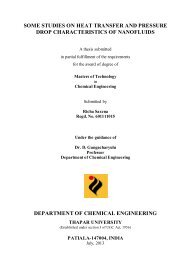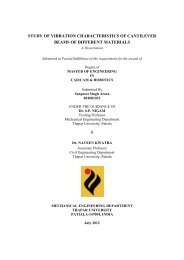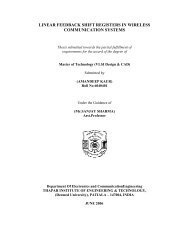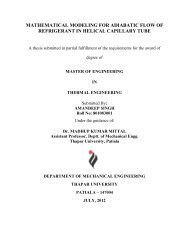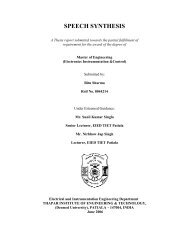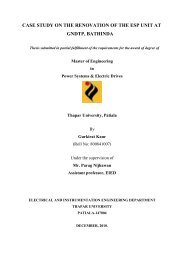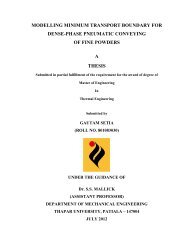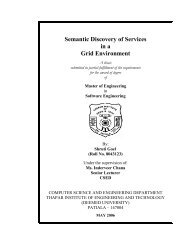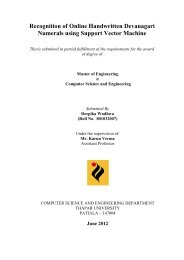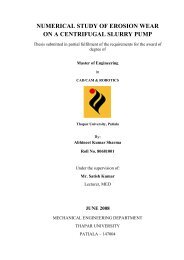from indigenous fermented foods and human gut ... - Thapar University
from indigenous fermented foods and human gut ... - Thapar University
from indigenous fermented foods and human gut ... - Thapar University
You also want an ePaper? Increase the reach of your titles
YUMPU automatically turns print PDFs into web optimized ePapers that Google loves.
2.4.1 Mode of action<br />
43<br />
Chapter II Review of Literature<br />
Although the mode of activity of bacteriocins can differ, the cell envelope is commonly<br />
their target. The majority is active by inducing membrane permeabilization. This is reflected<br />
by the fact that Class II bacteriocins have an amphiphilic helical structure, which allows them<br />
to insert into the membrane of the target cell, leading to depolarization <strong>and</strong> death (Fig. 2.3),<br />
(Cotter et al., 2005). To form the core of the pores, this structure is believed to face with the<br />
polar side towards the centre of the<br />
channel, while the non-polar side faces the<br />
hydrophobic phase of the phospholipid<br />
bilayer (Diep et al., 2002).<br />
This creation of pores in the membrane of<br />
their target cells results in dissipation of<br />
the proton motive force, intracellular ATP<br />
depletion <strong>and</strong> leakage of nutrients <strong>and</strong><br />
metabolites (Deegan et al., 2006). Moreover,<br />
to form a pore, interactions with the cytoplasmic membrane Source: of the Oscariz target <strong>and</strong> Pisabarro, cell are 2001necessary.<br />
Initial electrostatic interactions between the positively charged peptide <strong>and</strong> anionic lipids, which<br />
are in large quantities present in the membranes of Gram-positive bacteria, play a role to some<br />
extent in this mode of action. Thus, the sensitivity to bacteriocins depends partly on the<br />
physiological state of the cell (Eijsink et al., 2002). Up to this stage, it is not entirely clear<br />
whether bacteriocins act through receptors in the target cell membrane or if there is specificity in<br />
possible receptors.<br />
Fig: 2.2 Killing mechanism propose for<br />
bacteriocin



